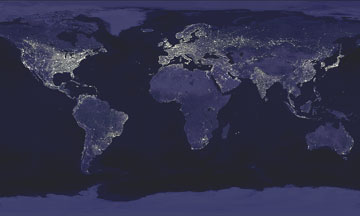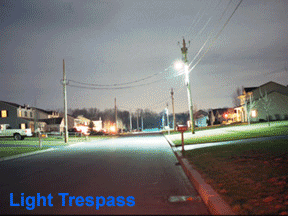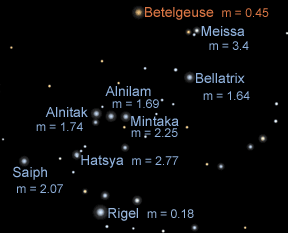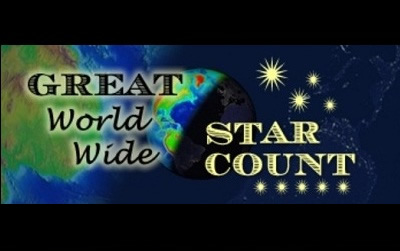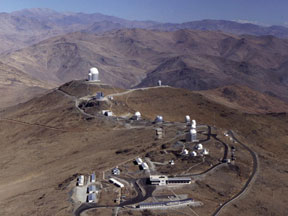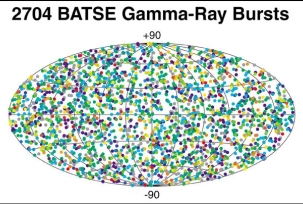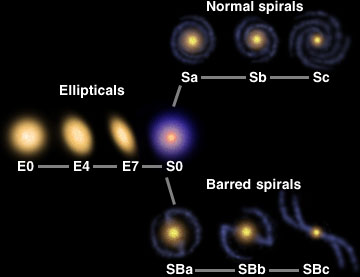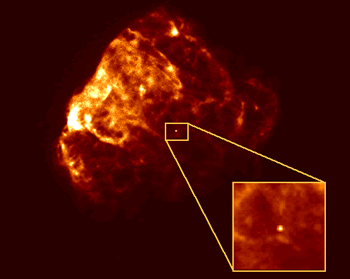Click on image for full size
Image courtesy of NASA, DMSP, and NOAA NGDC.
Light Pollution
What is light pollution? Simply put, light pollution is the unwanted illumination of the night sky created by human activity. Light pollution is sometimes said to be an undesirable byproduct of our industrialized civilization. Light pollution is a broad term that refers to multiple problems, all of which are caused by inefficient, annoying, or arguably unnecessary use of artificial light. Specific types of light pollution include light trespass, over-illumination, and sky glow.
Where is light pollution found? The now-classic Earth at Night composite image (left) suggests that light pollution is a problem in many parts of the world, with the worst concentration of light pollution being found in urbanized areas. In the highly industrialized and populated areas such as many parts of Europe, Asia, and North America, light pollution is a real problem. For example, in the Eastern United States, there are many areas where large expanses of land are illuminated at night. As cities and suburban areas grow, the number of lights at night also increases.
Why do we care about light pollution? Light pollution is a strong indicator of wasted energy. Lights, contrast, and glare all impact the number of stars that are visible in a given location. Only the brightest stars are visible when there is a lot of nighttime lighting. Many people in the urban locations have never seen the Milky Way.
Astronomers (both professional and amateur) have been concerned about the deteriorating quality of the night sky for some time. The excess of light has resulted in obscuring the night sky making observations difficult. It is not surprising to learn that astronomers need very dark skies to conduct their observations and research.
In addition to the concerns of astronomers, we have learned that light pollution causes problems to human and environmental health. Medical research on the effects of excessive indoor light on the human body suggests a variety of adverse health effects including increased headaches, fatigue, and stress.
There is also a strong case that light pollution is harmful to the economy as well as our ecology. When you look at the Earth at Night image above, think about all that light escaping into space. All of this light is wasted, so all the energy that was produced and consumed to create the light was also wasted. Ultimately, everyone pays for this wasted energy.
With the pervasive level of light pollution, the natural patterns of light and dark have been altered, impacting animal behavior. Lights at night can impact both the biology and ecology of species in the wild. Some examples include the disorientation of sea turtle hatchlings by beachfront lighting; nesting choices and breeding success of birds; behavioral and physiological changes in salamanders; disturbances of nocturnal animals; and altered natural light regimes in terrestrial and aquatic ecosystems.
Since the 1980's, there has been a global movement to learn more about light pollution, its impacts, and ways to mitigate or reduce its effects. Light pollution impacts most of the world's citizens in one way or another. It may be that you no longer are able to go outside and enjoy an unobstructed view of the night sky.


